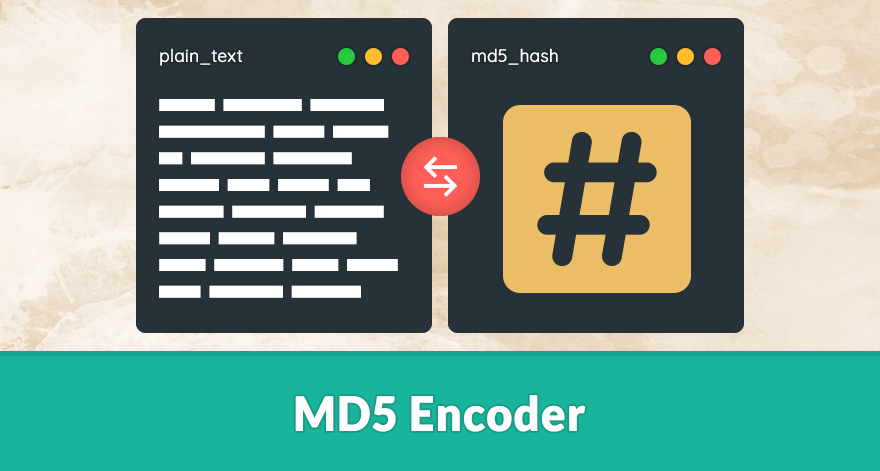

- #Md5 encoding how to
- #Md5 encoding password
However this functionality can become a flaw when handling MD5 string whose value has the form 0e followed by digits between 0 and 9. There obviously could be more reasons to even vote “for” base64 to be alive but compared to MD5’s usage at present, base64 is nowhere to be seen.The PHP language has a default functionality: the type juggling which allows to not define the type of variable used, the PHP engine tries to automatically detect if the variable is a string, an integer, etc.
Almost all networks and routers that our data passes through, accept data in all the basic formats (including Unicode). The use cases are very limited since the encryption is very weak. But the reasons why Base64 no longer is as popular as it was before is that: When you need to transmit a file that contains various characters like Unicode, or has formatting that some networks don’t accept, encoding the file with Bas64 makes it possible to transmit the file. MD5 hashes are also used to ensure the data integrity of files. This tool provides a quick and easy way to encode an MD5 hash from a simple string of up to 256 characters in length. This makes MD5 ideal for hashing passwords or similar. MD5 hashes are commonly used with smaller strings when storing passwords, credit card numbers or other sensitive data in databases such as the popular MySQL. Hashing a string with MD5 multiple times will always produce the same 128-bit value. Used for transmitting data over networks that accept information only in ASCII format. MD5 is a commonly used hashing function which outputs a 128-bit hash value. The MD5 algorithm is used as an encryption or fingerprint function for a file. An MD5 hash is composed of 32 hexadecimal characters. MD5 is the abbreviation of Message-Digest algorithm 5. Often used to encrypt database passwords, MD5 is also able to generate a file thumbprint to ensure that a file is identical after a transfer for example. Used majorly for storing passwords/sensitive data on databases and for verifying package integrity MD5 is the abbreviation of 'Message-Digest algorithm 5'. Fundamental Differences Between the MD5 and Base64 MD5ĭata once encrypted cannot be decrypted to the original formĭata once encrypted can be decrypted to their original form It generates hashes with a length of 128 bits. We’ll go over the basic syntax and some of the use cases that you can work with when using these commands. MD5 is the abbreviation for Message-Digest Algorithm 5, which is a widely used cryptographic hash function. 
Let’s get right into it and understand the different uses of MD5 and Base64 commands. Introducing the MD5 and Base64 Commands on Linux This isn’t going to be the most optimal choice if you want to ensure security but it would be a good idea to use it if your initial idea is to send data in plaintext. On the other hand, Base64 is a regular two-way encryption algorithm that allows both encryption and decryption of the data that’s passed to it.
#Md5 encoding password
When a user enters the password, the password is encrypted again with MD5 and the hashes are then compared on the back-end to verify that the passwords are the same. digest() : Returns the encoded data in byte format. When storing passwords on the database, the most secure way is to encrypt the passwords with a one-way encryption algorithm like MD5 so it cannot be reversed. Functions associated : encode() : Converts the string into bytes to be acceptable by hash function. The length of an MD5 hash is 128 bits or 16 bytes. import hashlib str2hash 'GeeksforGeeks' result hashlib.md5 (str2hash.

#Md5 encoding how to
Below code demonstrated how to take string as input and output hexadecimal equivalent of the encoded value.
Creating a Hash with md5sum and base64 Commands MD5 (Message Digest 5) is an algorithm that creates a chaotic output (message digest or hash code) based on your input. The md5 hash function encodes it and then using digest (), byte equivalent encoded string is printed. Using the md5sum and base64 Commands in Linux. Fundamental Differences Between the MD5 and Base64. Introducing the MD5 and Base64 Commands on Linux.







 0 kommentar(er)
0 kommentar(er)
